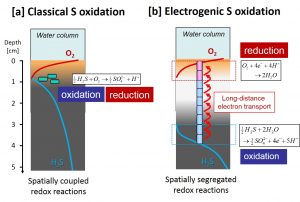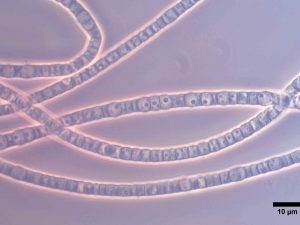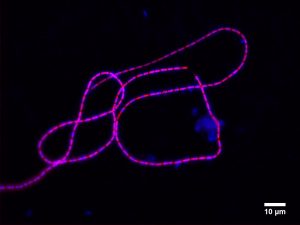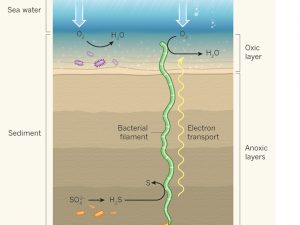Electrical cooperation between cells
By far the most remarkable aspect is the division of labor within a cable bacterium filament (Figure 2-right). One end of a cable bacterium filament penetrates the deeper anoxic sediment layers, where free sulphide (H2S) is consumed (the electron donor). Oppositely, the other end of a cable bacterium filament resides in a thin zone near the sediment-water interface, where oxygen diffuses from the water column into the sediment. In this thin oxic zone, oxygen (O2) is consumed by cells (the electron acceptor). Hence there is a clear division of duties: some cells harvest electrons from an electron donor, while other cells deliver the electrons to an electron acceptor. To make this possible, electrons must be send from the lower cells along the filament to the upper cells.
Electricity is flowing in the filament, and therefore, the metabolism of cable bacteria is called electrogenic sulfur oxidation. Because they retain an electrical connection with the cells in the oxic zone, cable bacteria are capable of harvesting H2S in deeper layers. This “deep sulfide mining” strategy gives them with a competitive advantage over other sulfide oxidizing bacteria that exist within the seafloor. Microbes that perform classical aerobic sulfide oxidation (Figure 2 – left) can only thrive at the oxic-anoxic interface, where both O2 and H2S are present together.

Figure 2. A comparison of classical sulfur oxidation by single-celled bacteria to electrogenic sulfur oxidation by cable bacteria. Cable bacteria have a competive advantage because they can harvest sulfide much deeper in the sediment. Adapted from Meysman (Trends in Microbiology, 2018).




